How to Grow Strawberries in Less Space
Install one of these systems and enjoy the sweet reward of homegrown strawberries no matter where you live
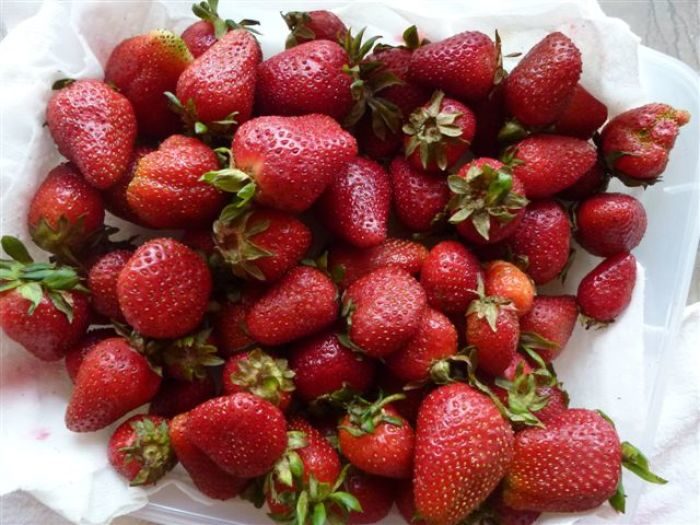
How much space do you think it takes to grow strawberries? If you’re picturing tractor-tended farm rows or a big, weedy backyard patch, you might assume you don’t have room for this sweet crop.
 But think again. Compact, shallow-rooted strawberry plants are well adapted to grow in containers, including a number of space-efficient systems. Bearing this in mind, any gardener—even an apartment dweller—can transform unused outdoor space into a berry-draped focal point.
But think again. Compact, shallow-rooted strawberry plants are well adapted to grow in containers, including a number of space-efficient systems. Bearing this in mind, any gardener—even an apartment dweller—can transform unused outdoor space into a berry-draped focal point.
Strawberries are perennial plants that can be productive for several years with proper care. June-bearing varieties set all of their fruit during a condensed period in spring and typically aren’t harvested during their first growing season. Everbearing strawberries, also known as day-neutral types, set fruit over a much longer period. They usually produce fewer runners, and the berries can be harvested during their first summer. These qualities make everbearers an appealing choice for many nontraditional production methods.
Container-grown plants typically require more water and winter protection than their soil-grown counterparts. But by growing your strawberries up off the ground, you’ll find that the berries stay cleaner and can be easier to protect from birds, slugs, and other pests.
A balanced fertilizer, such as 10–10–10, will encourage optimal growth and berry production. But be careful: Strawberry roots burn easily if overfertilized. Slow-release fertilizers or weekly liquid feedings work best.
Below are some of the most popular methods for growing strawberries in space-efficient containers. With a bit of effort and ingenuity, you can install one of these systems and enjoy the sweet reward of a pick-your-own destination in your own backyard.
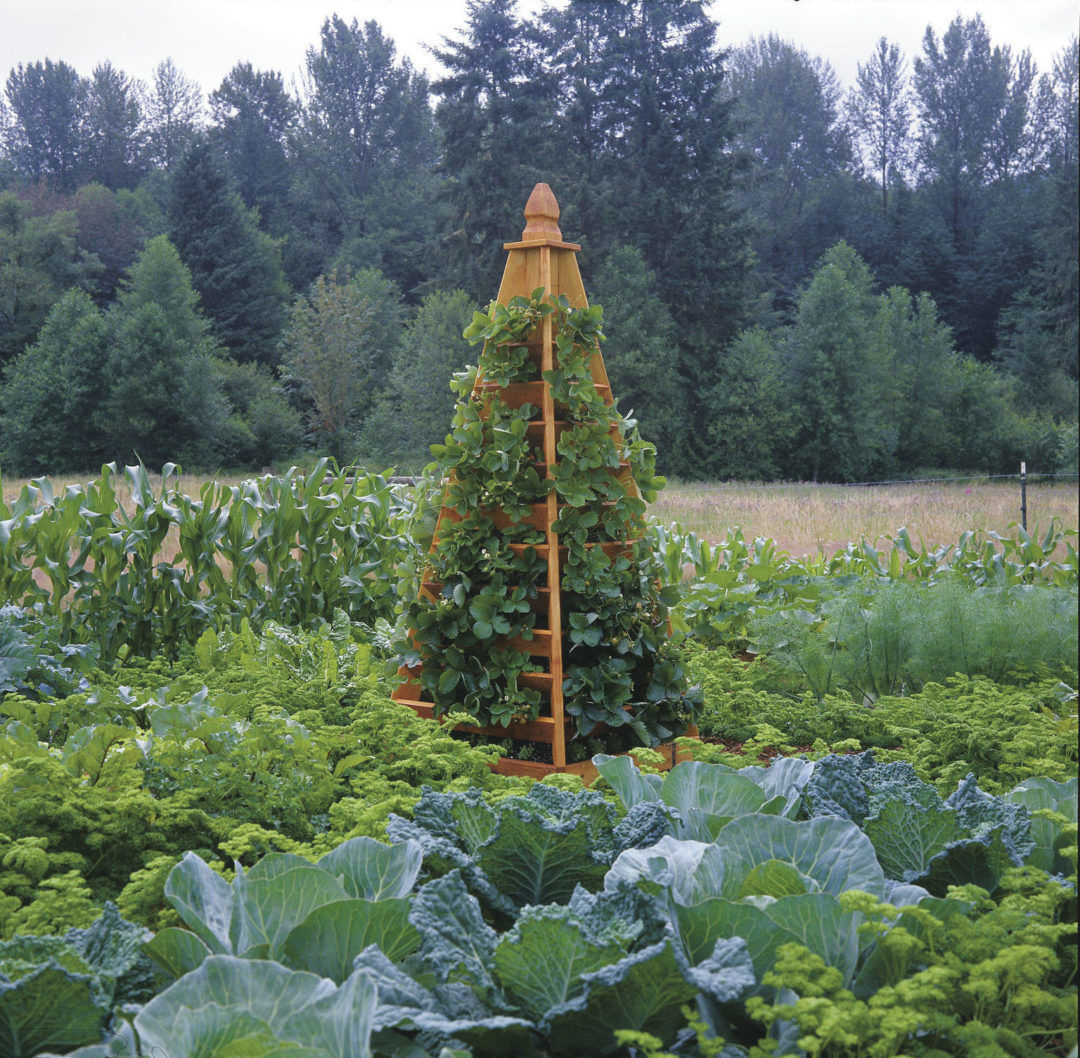
Towers

Pro: This system is a real space saver: A 6-foot-tall tower accommodates the same number of plants as 60 feet of traditional row space.
Con: Building a tower from scratch requires advanced carpentry skills, although kits are available with all of the parts precut.
Footprint: A 6-foot-tall tower is usually about 3 feet square at the base. This structure can be built onto a platform with casters to make it more portable.
Watering strategies: Drip irrigation and soaker hoses work well. Check the top tiers often because they will dry out more quickly.
Cost: A precut kit costs about $530; materials to build a tower from western red cedar cost at least $200.
Pots and planters
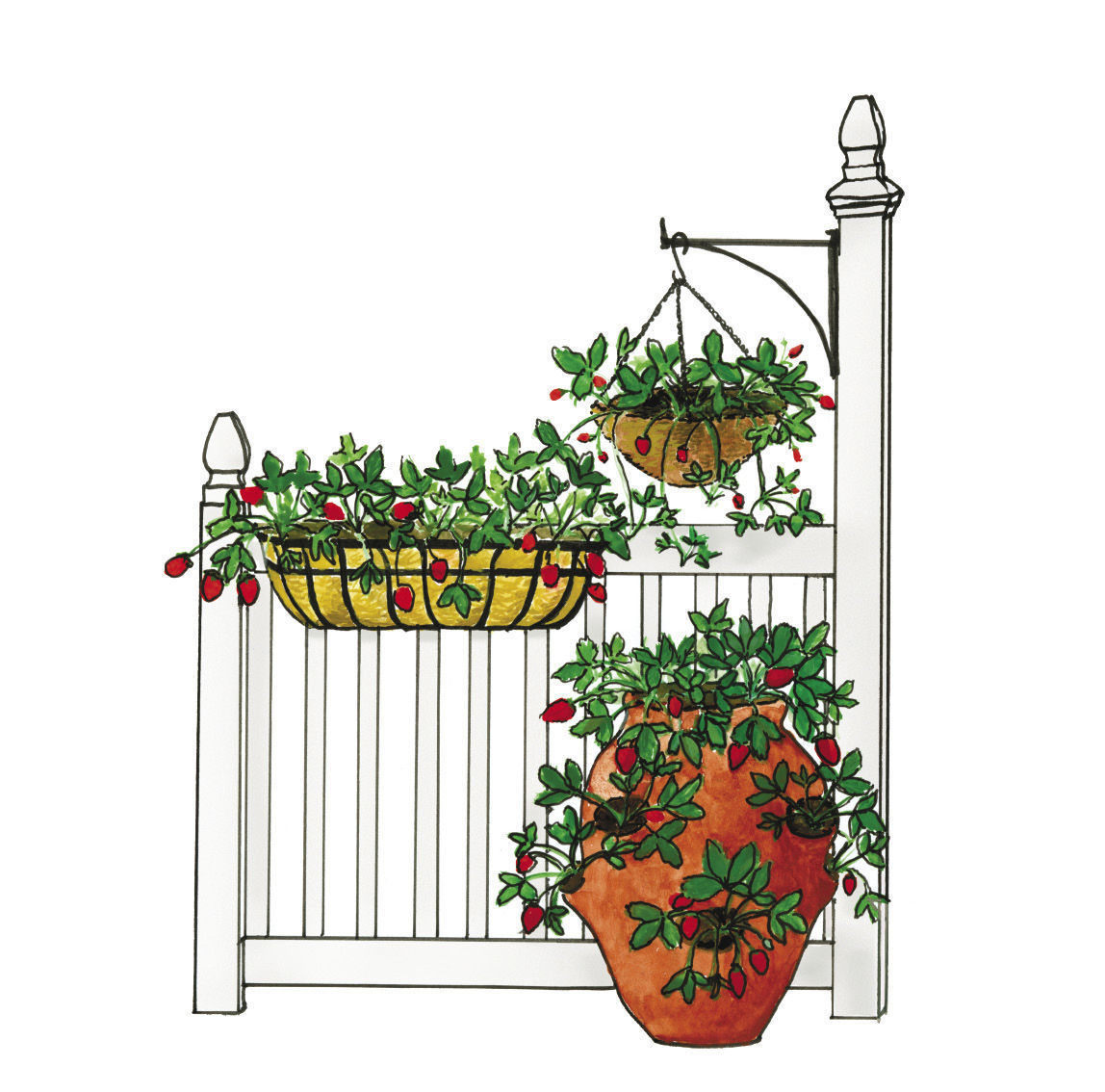
Pros: Planters can be found to fit almost any outdoor space and are easy to maintain for gardeners of all ages and skill levels.
Cons: Containers that hold only a few plants will produce only a small number of berries. Frequent (perhaps daily) watering might be required for containers in full sun.
Footprint: Most containers take up 1 to 3 square feet. Try window boxes, deck-rail planters, and hanging baskets to make excellent use of underutilized vertical space.
Watering strategies: Use drip irrigation, or water by hand.
Cost: Container costs vary widely. Keep in mind that you might already have a perfectly suitable planter in your shed or basement.
Rain gutters and stacked pots
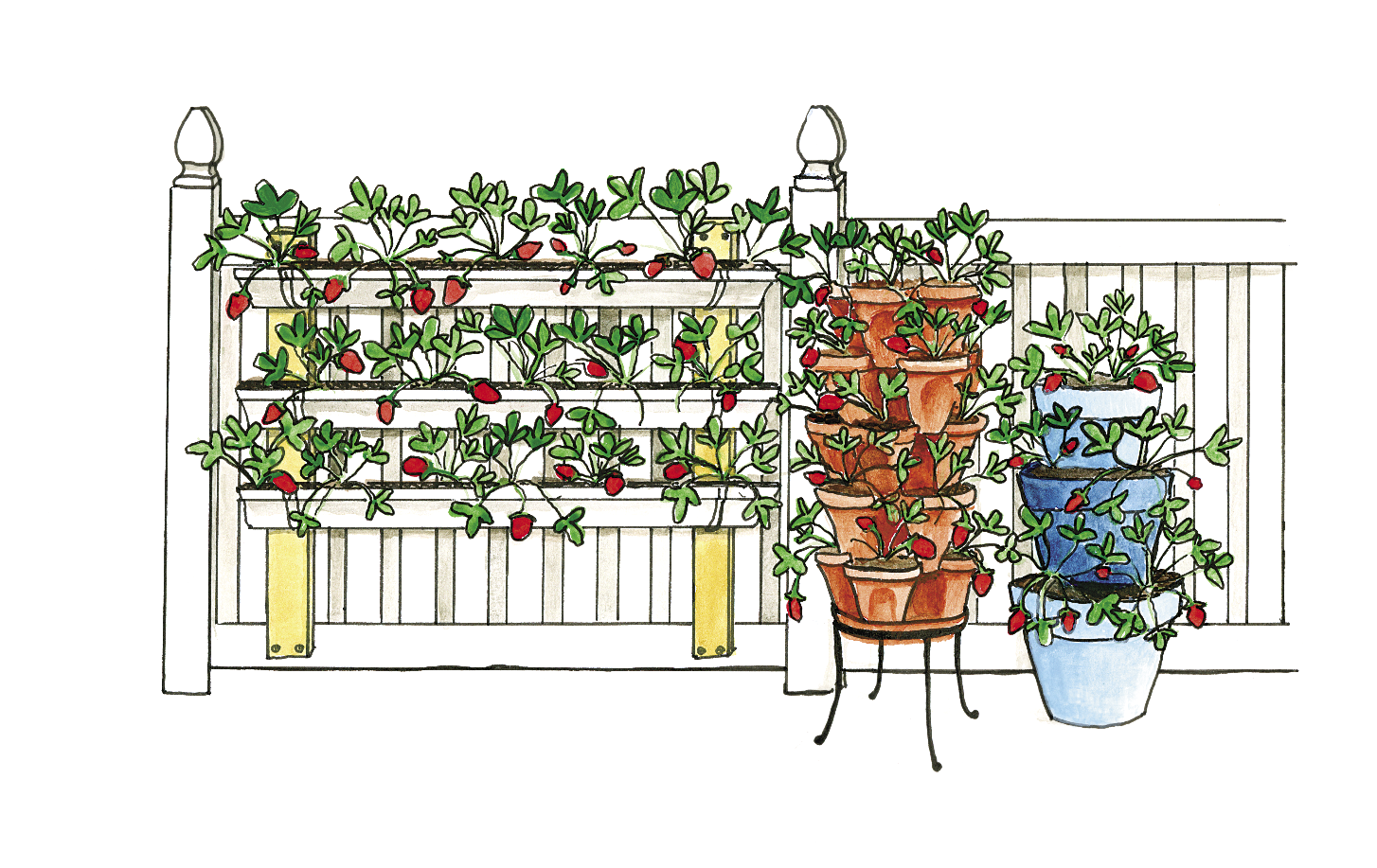
Pro: A space-efficient vertical planting is a great way to recycle gutters or containers that you have on hand.
Cons: You must make sure that your wall or fence is sturdy enough to handle the extra weight of planters. Winterizing could be difficult; plants might need to be heeled into the garden in fall or replaced each spring.
Footprint: These options take up 3 square feet of space or less.
Watering strategies: Use soaker hoses, or water by hand.
Cost: A 10-foot length of aluminum gutter and two end caps cost about $10. A five-tier stacking planter, like Mr. Stacky (mrstacky.com, 386-269-4922), is about $40.
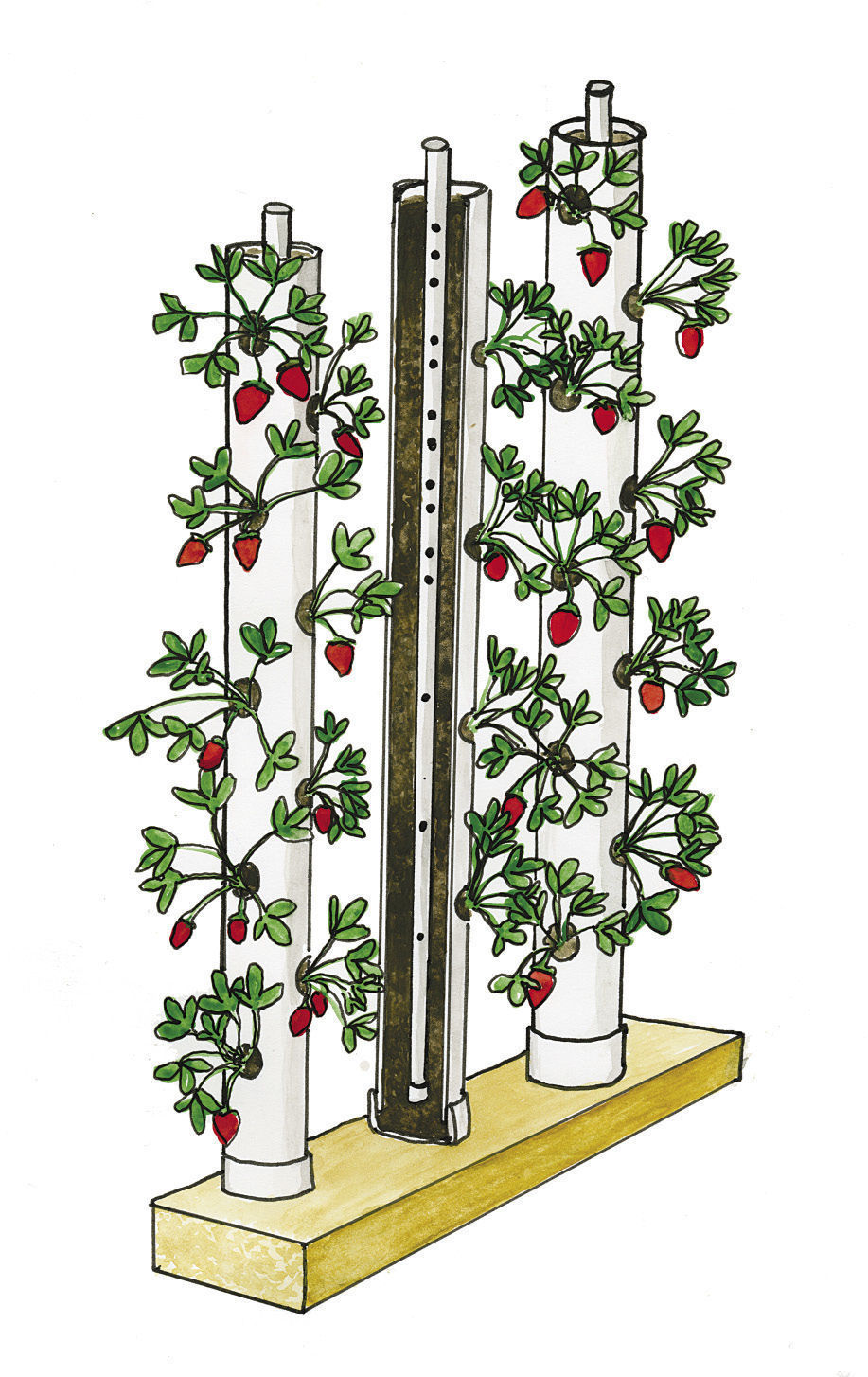
PVC planters
This new system utilizes upright 6-inch-diameter PVC (polyvinyl chloride) pipe with holes drilled to accommodate plants. Pipes can be anchored to the ground, mounted against a wall, or hung from a sturdy overhead support. Settling soil can be a problem, so be sure to tamp carefully as you fill the pillar.
Pro: This DIY-friendly project can be adapted to fit almost any space.
Con: Where winters are cold and dry, plants might not survive the winter if left in the tower.
Footprint: This system takes up less than 1 square foot per pipe.
Watering strategy: To keep this vertical planter watered, a length of 1-inch-diameter PVC pipe with a bottom cap and several 1/8-inch-diameter holes along its length can be placed in the center of the larger pipe before soil and plants are added.
Cost: Materials cost about $30 to $40 per 5-foot-tall pillar.
Pyramids

Pros: Pyramids are fairly easy to assemble, either from a kit or based on your own design. With room for runners, this system works equally well for June-bearing and everbearing varieties. Winter protection and watering needs are similar to those of in-ground plants.
Cons: This planter, requiring about 22 cubic feet of soil to fill, is too bulky to work well on a deck or balcony. Once installed, it is not easy to relocate.
Footprint: A pyramid is usually about 5 feet square, although you can design one to fit the space available. Remember that a wider base will make harvesting from the center more difficult.
Watering strategies: Use sprinklers or soaker hoses, or water by hand.
Cost: A kit costs about $160; you could save money if you build your own beds out of salvaged lumber.
Strawberry picks
Choose a dependable, disease-resistant variety to help ensure a beautiful, bountiful crop. Here are a few cultivars to consider.
‘Earliglow’
(June bearing, USDA Hardiness Zones 4–8)
‘Earliglow’ is my favorite strawberry. Attractive, reliably vigorous plants produce loads of flavorful, early-season fruit.
‘Chandler’
(June bearing, Zones 5–8)
A good choice for southern gardens but equally dependable farther north, ‘Chandler’ sets fruit midseason, so crops are less likely to be zapped by late frost.
‘Seascape’
(Everbearing, Zones 4–8)
Hard-working ‘Seascape’ plants start producing berries about three months after they are planted. Keep them well-watered for the best performance.
‘Albion’
(Everbearing, Zones 4–8)
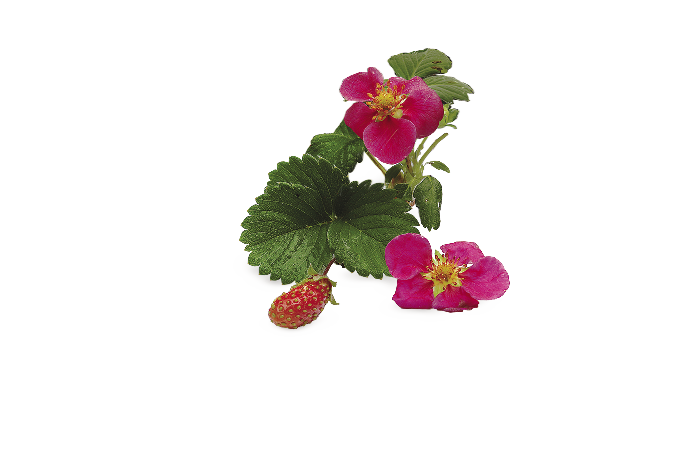
‘Tristan’
(Everbearing, Zones 5–8)
With unusual rose-colored blossoms and small berries, ‘Tristan’ is a charming choice for jars and hanging baskets.
Matthew Stevens is an extension agent at the Halifax County office of the North Carolina Cooperative Extension Service.
Photos, except where noted: Scott Phillips, Michael Gertley, Carol Collins. Illustrations: Carol Collins
Fine Gardening Recommended Products

Chapin International 10509 Upside-Down Trigger Sprayer
Fine Gardening receives a commission for items purchased through links on this site, including Amazon Associates and other affiliate advertising programs.

A.M. Leonard Deluxe Soil Knife & Leather Sheath Combo
Fine Gardening receives a commission for items purchased through links on this site, including Amazon Associates and other affiliate advertising programs.

Razor-Back Potato/Refuse Hook
Fine Gardening receives a commission for items purchased through links on this site, including Amazon Associates and other affiliate advertising programs.






Comments
Log in or create an account to post a comment.
Sign up Log in